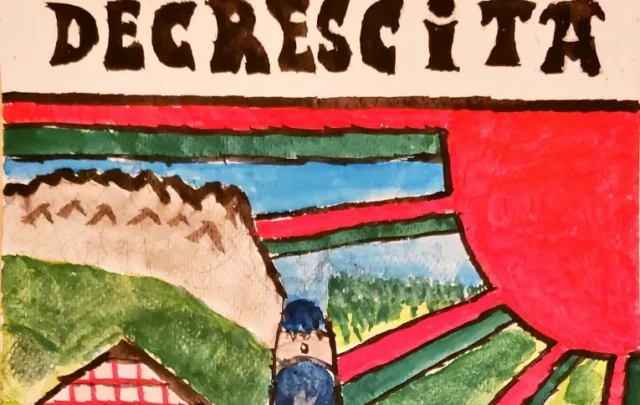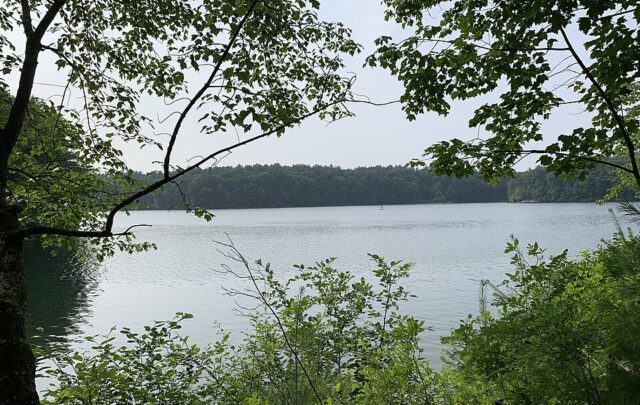 |
| Fire in the New Valley, Egypt – PlanetLab |
2016 was a year for revolutions. Really it was only a continuation of the Tunisian Spring that began in 2010 or, even before that, the Arab labor strikes that ran from 2006 to 2008, followed by insurgencies and civil wars in Iraq,Libya, Syria, and Yemen, civil uprisings in Bahrain and Egypt, large street demonstrations in Algeria, Iran, Lebanon, Jordan, Kuwait, Morocco,Oman and Sudan and minor protests in Djibouti, Mauritania, the Palestinian territories, Saudi Arabia, Somalia and the Western Sahara, then the 2008 financial crash, Occupy, the collapse of Greece, the Ukrainian civil war, Brazil, Venezuela, Turkey, many more and eventually Brexit and Trump. A major slogan of the demonstrators in the Arab world was Ash-sha`b yurid isqat an-nizam (“the people want to bring down the regime”). It applied equally well to Brexit and Trump.
It is no coincidence that all this revolutionizing started with the crash of the world’s energy pyramid in 2005 and the climate chickens coming home to roost about the same time. It has been papered over by financial fictions in the West (Ponzinomics), but 2005 marked the start of the long emergency and the decidedly different times in which we now live. Historic, concurrent and rapid state failures in the Middle East, Northwest Africa, South and Southeast Asia, Europe and North America are either coming, or have already arrived. This week we are witnessing the implosion of México, next week it could be Japan.
Turning and turning in the widening gyre
The falcon cannot hear the falconer;
Things fall apart; the centre cannot hold;
Mere anarchy is loosed upon the world,
The blood-dimmed tide is loosed, and everywhere
The ceremony of innocence is drowned;
The best lack all conviction, while the worst
Are full of passionate intensity.
— Yeats (1919)
In Failing States, Collapsing Systems (Springer 2017), Nafeez Mosaddeq Ahmed writes:
Yet while policymakers and media observers have raced to keep up with events, they have largely missed the biophysical triggers of this new age of unrest – the end of the age of cheap fossil fuels, and its multiplying consequences for the Earth’s climate, industrial food production, and economic growth.
What we are about to undertake is to write a prescription. Essentially, over the next 10 or 12 weeks, we are going to write a book comprised of a string of these blog posts, chapter by chapter. We intend to lay out the whole philosophy of the change required, and then describe, in mechanical detail, not only what must be done, but how it can be accomplished without bloodshed but with plenty of gaity, song and dance. We are calling this our Power Zone Manifesto.
Power Zone: A kite wind window is the area where the kite can fly. This is a three-dimensional semi-dome. In the wind window there are three components: the power zone, the intermediate zone and the edge of the wind window. When you can feel the wind in your back, you will find the power zone lying in front of you. In the picture you see the red and orange colored areas where this is indicated. This is the part where the kite catches wind the most and thus where the kite generates the most power. A Power zone is a risk zone where you should go with caution, but this does not mean it’s dangerous. It’s a learning process on how to use it.
Manifesto: (1620, Italian, from manifestare — denunciation, and Latin, manifestus) a written statement that describes the policies, goals, and opinions of a person or group
— Mirriam-Webster
We are embarking, with this first installment of the New Year, on a journey together. We are sending a kite into the power zone. Our subject is climate change, but more importantly, civilizational change. The two are a coupled pair, like matter and anti-matter. Not everyone understands that yet, or appreciates the gravity of the situation, and that is unfortunate but okay. The full horror will reveal itself gradually, in fits and starts, and in times and places not of our choosing. Here, in 2017, we take it on faith that we still have options. That faith could be entirely misplaced but from the available evidence we cannot say either way — the climate juggernaut is in motion but perhaps still reversible. Faith gives us agency. Apostasy does not. We are creatures that exercise agency as an inherited condition. Take that away and we psychologically shatter, wither and die. We need to feel we have choices. We need to be able to exercise will.
So, feeling the wind at our back, we edge the kite closer to the power zone.
 |
| Escondida Mine, Chile, PlanetLab |
It has been said that what distinguishes homo from other animals is our ability to make tools. We disagree. Other apes make tools. A crow uses a stick dabbed with honey to catch ants. A humpback whale, having neither hands nor feet, may fashion a bubble net to snare its lunch, humming a song of its own composition as it reels in the harvest.
Perhaps one thing that distinguishes homo from other animals is our ability to accumulate knowledge culturally, and to do so more rapidly than, say, the lessons passed by each generation of she-wolves to their young, or the nuanced dances of honey bees.
Climate change is occurring so rapidly now, and with such apparent acceleration, that it forces us to go beyond even our high rates of cultural cataloging. We do not have the luxury of slow, generational change. Already born are children who will experience an Earth four or five degrees warmer than it is right now, maybe even much hotter.
Graeme Taylor, in A Realistic (Holistic) Approach to Climate Mitigation, World Future Review 2016, Vol. 8(3) 141–161, writes:
In general, a realistic climate mitigation strategy must (1) clarify the requirements for a safe global climate, (2) develop a viable strategy for managing critical risks and ensuring safe outcomes (e.g., a multitrack approach capable of both accelerating change within existing institutions and catalyzing systemic transformation), (3) progressively build scientific and political support for this strategy, and (4) develop national and international alliances to educate, encourage, and pressure decisionmakers at all levels to take effective action.
Diplomats and politicians have been slow to come to agreement about the requirements for averting catastrophic climate change. Rather than clarify, they have generally done everything possible to obscure. Scientists, by contrast, have been gradually moving into consensus for the last century or more and now are at nearly complete unanimity, with piercing clarity.
In broad stroke, to reestablish the relatively stable climate of the last 10,000 years, the Holocene epoch, we must restore the relationship between energy arriving and leaving Earth’s land, oceans and atmosphere.
By any reasonable measure, we are outside the zone of safety already.
The physical requirements to return to a safe climate zone are these:
- Humans must stop adding carbon to the atmosphere (and thereby to the oceans);
- We must stop throwing off the balance of nitrogen, phosphorus and other critical cycles that maintain photosynthetic equilibrium and the energy balance of the Earth in relation to the Sun;
- We must reverse desertification;
- We must arrest the degradation of biodiversity;
- We must restore the naturally regenerative systems and allow them to heal the damage that has been done.
These five physical requirements are not negotiable. They cannot be bargained down, discounted, or put on a layaway plan. This creates a dilemma for human societies, because, as far back as our emergence from the past ice age and the adoption of agriculture, we have been marking progress by measures that result in the precise opposite of these requirements.
Atmospheric carbon dioxide, at least a third attributable to agriculture, is on track to peak after 2050 at 600 ppm, more than double the Holocene mean. But agriculture was only made possible by the advent of the gentle Holocene.
Agriculture made us sedentary, created a system of division of the commons and private property, installed capitalism (to borrow and lend lands and seed and to apportion risks and profits) and militarism (to protect property, stored harvests and contract rights), codified laws beyond the moral variety handed down on tablets from God, and gave rise to cities and monumental state architectures.
Could it be that to meet the five requirements we next need to undo all that? Is that even possible?
This is what regime change looks like
Taylor’s second point is more difficult to address than his third and fourth. We have been building political support the same way we built the scientific support, only much more slowly. National and international alliances have been forged, across all parts of civil society, and those continue to exert pressure on decisionmakers. To find “a multitrack approach capable of both accelerating change within existing institutions and catalyzing systemic transformation,” however, is a much bigger ask.
Taylor correctly summarizes the state of international negotiations:
Critics argue that the Paris Agreement failed to deal with many crucial issues. These include assessing and managing the real risks and costs of climate change; defining greenhouse gas (GHG) concentration safety limits; determining a time frame for emissions to peak; stopping fossil fuel subsidies; imposing carbon pollution taxes; limiting both fossil fuel supply and demand; developing clean substitutes for nonelectrical uses of fossil fuel energy; ensuring that climate change costs are borne equitably by rich and poor nations; reducing resistance to climate mitigation through developing alternative, nonpolluting uses for fossil fuels; and planning the transformation of the global political economy into a sustainable system.
***
Because it does not take a holistic, precautionary risk management approach to climate modeling, it does not recognize that biophysical limits and timelines are nonnegotiable, and that passing critical thresholds creates the potential for systemic failure or state change. For instance, the Paris Agreement does not place safety limits on atmospheric CO2 and other GHG concentrations, an absolute cap on ocean and atmospheric temperature increases, an absolute cap on ocean acidification, or a specified timeline for reducing GHG emissions.None of these deficiencies was corrected in Marrakech, nor are they expected to be corrected in COP-23 in Bonn next year. This does not make the UNFCCC multi-stakeholder process useless, it just means it is very slow. Like climate itself, it moves in fits and spurts. We can agree: it is probably not up to the challenge posed by exponential chaos.
 |
| Plutonium Valley, Nevada Test Site, PlanetLab |
If you are toying with some of these ideas, before you throw in the towel and say its hopeless, lets start by naming the deluding passions.
The world is not easily divided between those who deny climate change is a problem and those content to criticize the political stalemate as the karma of capitalism. Nor is it easily divided between those who assume that governments have the matter under control and those that believe the AI singularity will deal with it by dint of human ingenuity.
There is a spectrum of opinion out there. One may overlap with another, or the roles reverse without warning. What is “conservative” actually? What is “liberal?”
Reframing Reality
One might think from the plain definition of the word that conservatives are those who seek to protect and “conserve” the resources that confer wealth upon societies. Those would be things like soil, water, clean air, biodiversity and a system of social contracts that prevents despoliation of the commons. And yet, whether you are speaking of conservatives in the US, UK, Europe or somewhere else, they all have in common a disdain for these very things, and are doing everything possible to use up, trash, and deregulate the expropriation of resources while at the same time relaxing restrictions on pollution and habitat destruction.
On the flip side of that coin we have the liberals — like deer in the headlights when it comes to net energy and peak everything. “Liberal” should mean broad-minded, generous, and progressive. Instead, in an era that screams for rapid build-down of over-extended economies, liberals champion expansion, whether it be programs to resettle, educate and empower refugees, conferring rights to “sustainable development” on non-industrialized, rapidly overpopulating countries or sending out a high-tech military empire in search of the final drops of fossil sunlight in order to sustain the nonnegotiable.
Caught between these polar conflicts are masses of sheeple, running this way and that, trying to escape the pull of the power zone. Knowing that Ash-sha`byurid isqat an-nizam is the dominant sentiment, regimes are running scared, whether they are regimes of government, economics, academia, or science. Regime change is in vogue. The world has become a free-fire zone.
Cooler heads will eventually prevail. Some pain may have to be experienced first. A change is coming, and next week we will continue to tease out some of its outlines.
When a vast image out of Spiritus Mundi
Troubles my sight: somewhere in sands of the desert
A shape with lion body and the head of a man,
A gaze blank and pitiless as the sun,
Is moving its slow thighs, while all about it
Reel shadows of the indignant desert birds.
The darkness drops again; but now I know
That twenty centuries of stony sleep
Were vexed to nightmare by a rocking cradle,
And what rough beast, its hour come round at last,
Slouches towards Bethlehem to be born?





